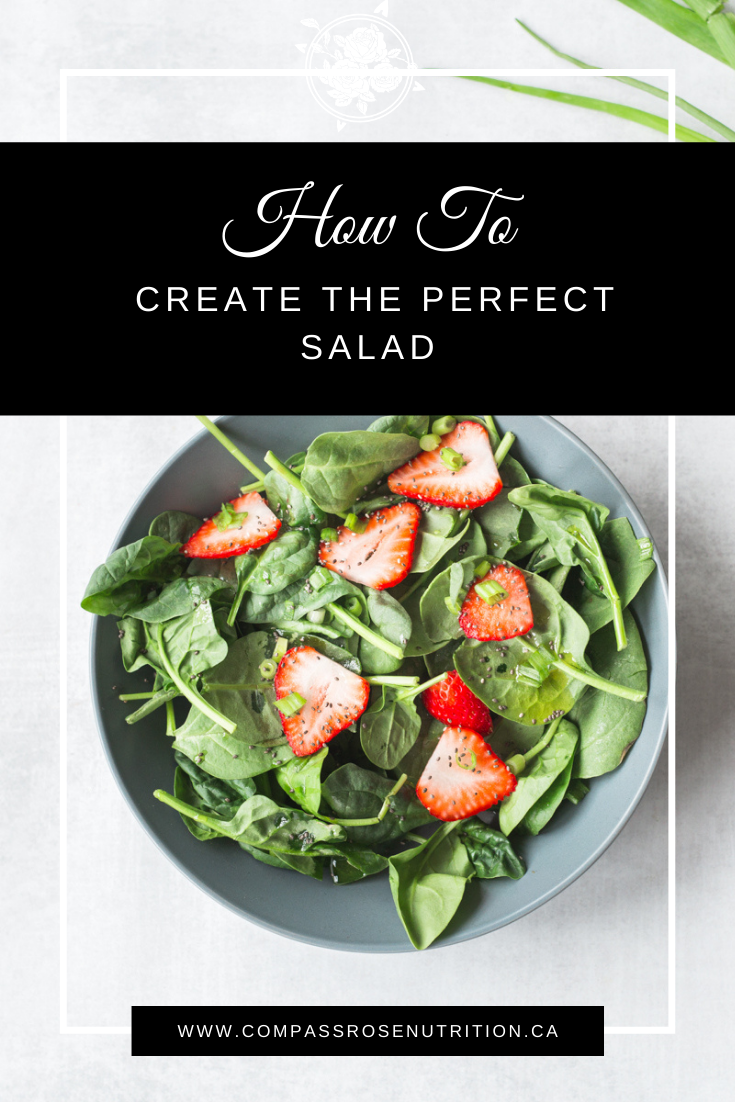Are you creating the same boring salad every day? Don’t get me wrong I love a good salad, but what I love more is the perfect salad.
Salads seem to be everyone's go-to meal when they're trying to eat healthier. They're full of crunchy, colorful veggies, low in calories, and loaded with micronutrients. They are also easy to toss together for lunch, whip up for a simple and quick dinner, and there are so many different variations that it's hard to get bored of salads. This makes salads a perfect go-to meal -- they're excellent for filling up your body with a load of nutrients and not having that heavy, full feeling afterward.
Here's a simple method for creating the perfect salad, step-by-step:
Pick your salad base
Iceberg lettuce is the most popular, but there are so many leafy green veggies that you can use instead, such as kale, spinach, Boston lettuce, and arugula. You can even mix them to get more variety in your nutrients and taste. Try to aim for a base of dark leafy greens to get the biggest nutritional bang for your buck.
Add your fruits and veggies
Yes, you can add the typical veggies but think about going beyond the veggie box and add some fresh fruit into your salads. This can tremendously upgrade the flavor and make your salads more interesting. Pears, berries, and oranges taste delicious in salads, but experiment with flavors and find which combinations you enjoy.
Try adding at least three different colors of produce into your salad— not only will it look more appealing, but it's an easy trick to give you a variety of nutrients.
Choose your source of protein
Adding protein to your salad will help make your salad more filling and keep you full for longer. You can choose from plant-based sources of protein, such as beans and legumes, or chicken breast, fish, and other lean proteins. Try to avoid processed meats and protein sources that are high in saturated fats. Beans and legumes are high in protein and fiber, which will do a better job keeping you satisfied for longer.
Add some whole grains
Carbohydrates are excellent sources of energy and are perfect additions to any meal to get you through the day. Adding whole grains, such as quinoa, barley, or rice to your salad can help stabilize your blood sugar levels and give you a boost of energy without the crash.
Finish with some extra toppings
Now that you have your main components, it's time to add some texture and extra nutrients to your salad. Sprinkle with some toasted nuts or seeds for some crunch and a source of healthy fats that will help keep you full. You can also add some whole grain chips for a healthy alternative to croutons.
Make your salad dressing
Store-bought salad dressings can be full of sugar, artificial flavors, and saturated fats. Making your own salad dressing can be simple, delicious, and much healthier for you. Some staple ingredients for a homemade healthy salad dressing are olive oil, balsamic vinegar, lemon juice or other citrus juices, Dijon mustard, and tahini. There are tons of recipes out there, depending on what flavor and nutrition content you're looking for!
Making the perfect salad is simple once you know the basic steps. This perfect go-to meal has so many options with endless ingredients. What are your favorite salad ingredients?
Comment below and let me know what you usually add to your salads.
To help you get started with your next healthy habit - meal planning - head over to my Nutrition and Wellness Library. Inside you will find meal plans, healthy recipes and so much more. Click below and sign up - it’s free!




